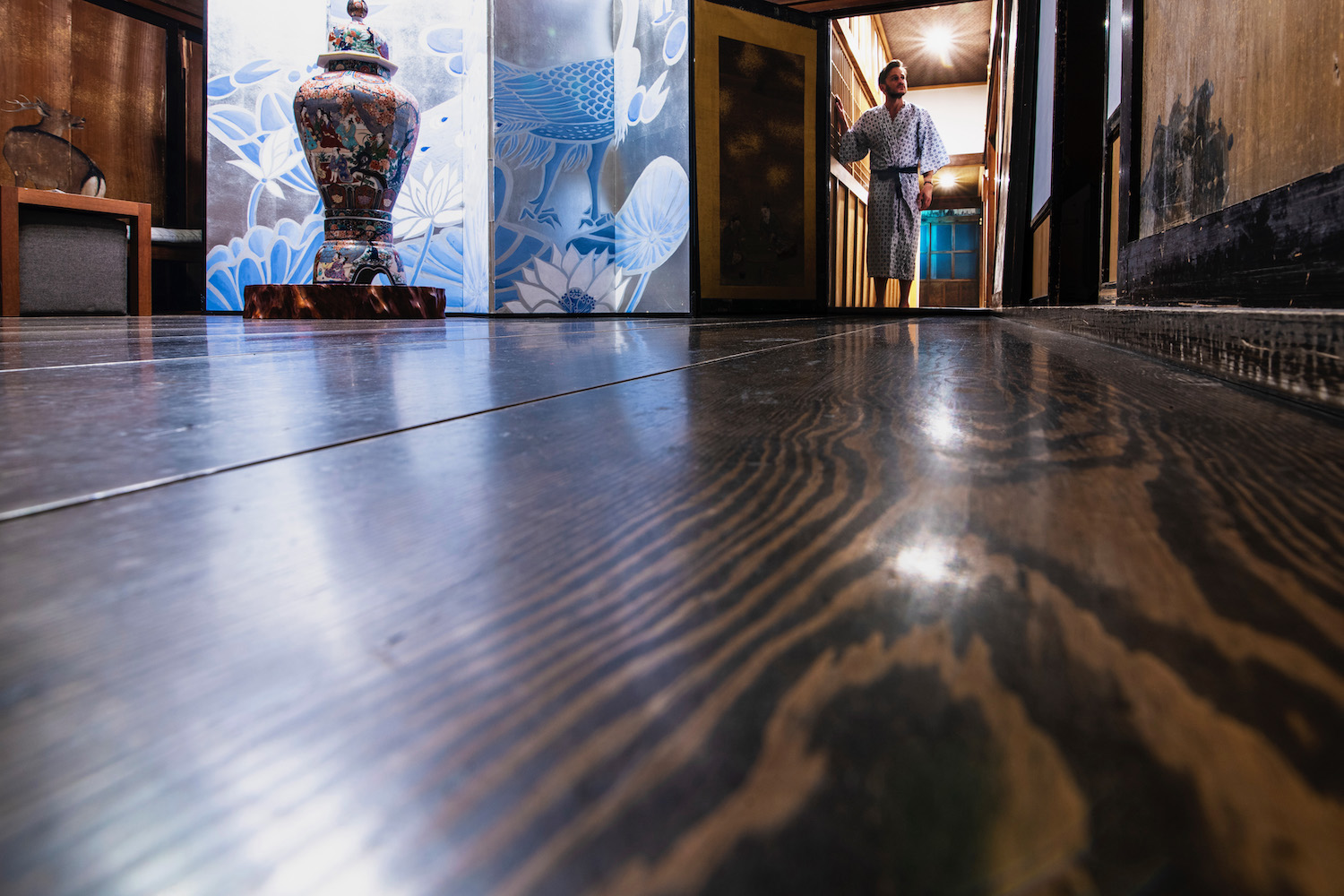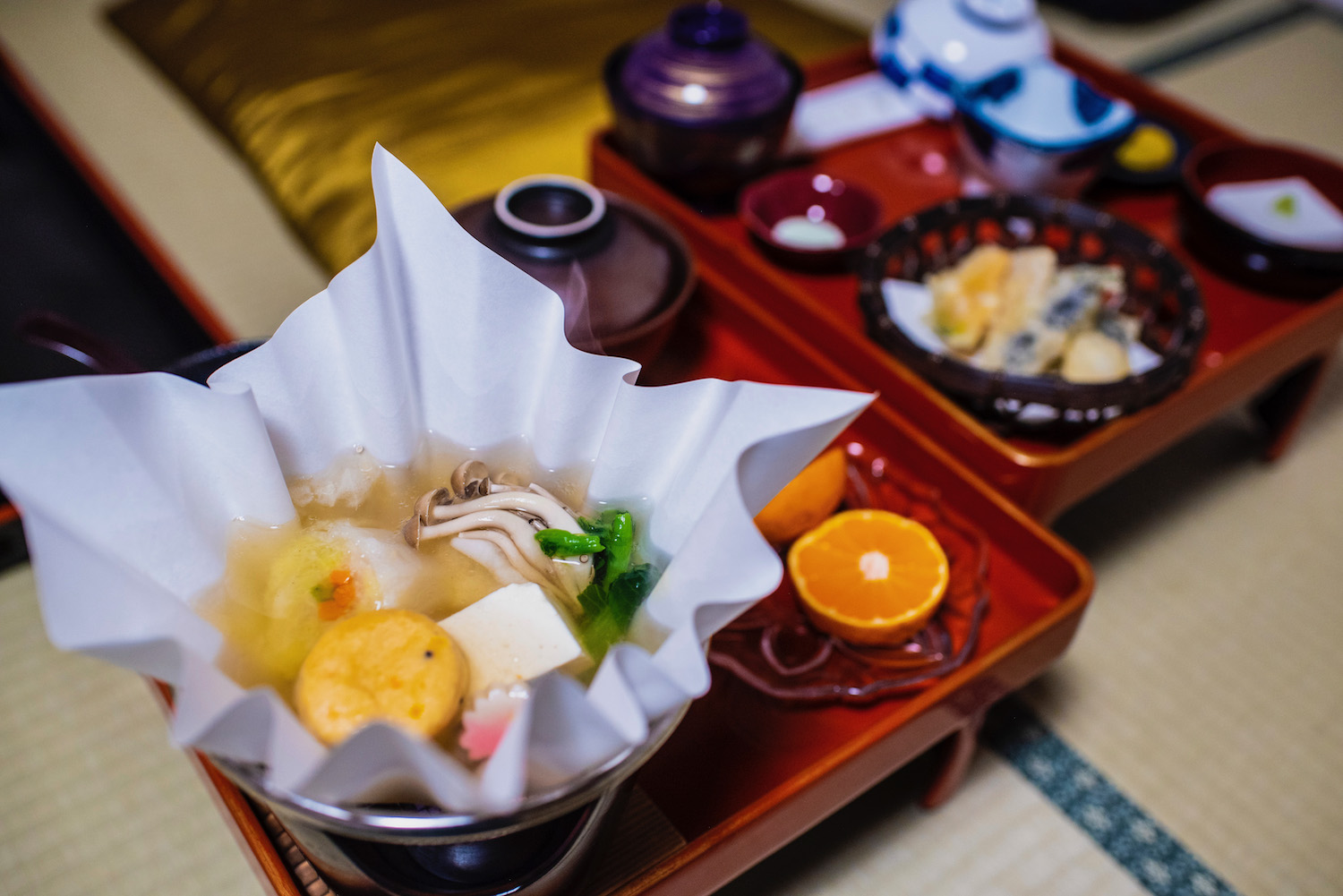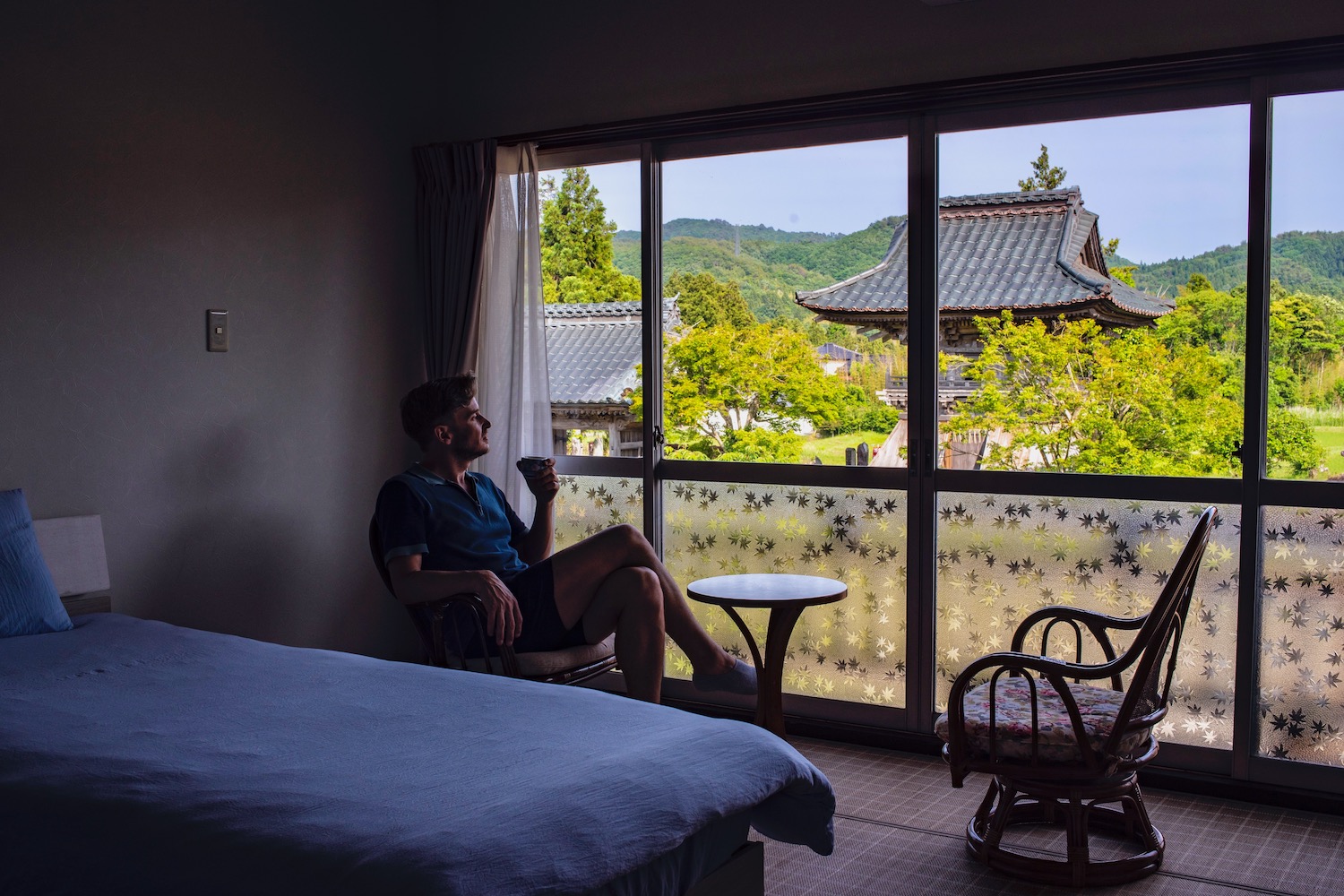I can’t lie: The Shukubo, or temple stay, was already somewhat popular the first time I did one, atop Mt. Koya back in 2018. The price I paid for it alone (around ¥30,000 per night for two people) reflects this.
On the other hand, both the number of such accommodations and the demand for them has skyrocketed in more recent years, specifically since the pandemic. And not just at Koyasan, even though that remains the Japanese destination with the highest concentration of temples you can sleep in.
My goal, over the next few paragraphs, is not only to help you find temple stays in Japan, but to demystify the topic and talk about it in a sober way. These sorts of lodgings are definitely cool, but they might not be what you think they are.
How the Shukubo Became a Sought-After Accommodation Choice
In some ways, the success of the Japanese shukubo makes sense. Japan is relatively undiscovered by Westerners; when they do go there, they seek out experiences that feel authentic and, for lack of a better word, Japanese. Being able to sleep in a Buddhist temple, irrespective of what it actually entails (more on that in a second) is a perfect conceptual fit for this broad objective.
The reality of a temple stay, to be sure, often belies its high cost and the high expectations foreigners place on it. Accommodation is often more on par with a simple minshuku than with a similarly priced ryokan, and almost always requires you to share a bathroom with other travelers. On the flip side, the unique Buddhist-vegan Shojin ryori is one of Japan’s more compelling cuisines, particularly for the vegetarian travelers who often feel left out in the cold here.

Popular Temple Stay Destinations in Japan
Mt. Koya (Koyasan)
Mt. Koyasan has become more crowded and expensive since I first started going there, but I still love it. In fact, as I write this, I’m just two months out from taking my next trip there! My advice, if you do go here, is to avoid the popular Eko-in and choose other highly-rated options, such as Saizen-in and Fugen-in.
Kyoto
I actually didn’t realize that it was possible to do a Japanese temple stay in Kyoto when I lived there, which is now a big regret of mine. To be sure, as tourism has boomed, many Kyoto temples have ceased operating as shukubo. You can see a full list of ones that still do here!
Sado Island
When I abruptly moved my planned April 2025 return to Sado Island to June of that year (the sakura were late; in April, I wouldn’t be able to watch Noh), I accidentally booked a stay at Gyokurin-ji, which quickly became my favorite Japanese temple stay (in part because I was the only guest). Staff there told me there are plans for more shukubo on the island!
Shingu
I’ll admit: I haven’t personally sampled the Japan temple stay in Shingu, which I don’t believe was open the last time I visited Japan’s nearby waterfall pagoda. Still, Chotoku-ji has all the markings of a great temple lodging; plus, it’s just a short walk from Shingu Station.
The Shikoku Pilgrimage
It might not be surprising, but many temples along the 88-temple pilgrimage route on Shikoku Island offer shukubo accommodation. What’s slightly more frustrating is two parallel facts: You can’t generally book these in advance; in spite of this, you run the risk of turning up to find the one you want is full. D’oh!

Other Novelty Accommodation in Japan
Temple stays have been the most desired Japanese accommodation in recent years, but they’re not the only one. The first that comes to mind, which was at its most popular prior to Japan’s 2010s tourism boom, is the Capsule Hotel. These small rooms had much more utility, to be sure, in the days when the Japanese yen traded at 80-100 to the USD, instead of the current rate of around 140-160.
Another alternative to a temple stay in Japan that is very, shall we say, different? The Love Hotel, which as its name suggests is a by-the-hour accommodation that exists first and foremost to serve lovers looking for a place to…love. You can also technically stay in certain Japanese castles, though the truly exorbitant rates for such experience means that it isn’t really sensible for someone like me to cover them.
Other FAQ About Temple Stays in Japan
How much is temple stay in Japan?
Temple stays in Japan can range from reasonable rates like ¥10,000 per night (or even less) in off-the-beaten-path destinations like Niigata‘s Sado Island, to as much as ¥100,000 per night (or even more) atop Mt. Koya, whose shukubo popularized the concept in the first place.
Where to stay at a temple in Japan?
The most common place to do a temple stay in Japan is Koyasan, a sacred mountaintop town in Wakayama prefecture, where global understanding of the concept originated. However, shukubo are available elsewhere in Japan, including in Kyoto, as well as on islands like Sado and Shikoku.
Is Koyasan temple stay worth it?
If you book early and can get a reasonable rate at a highly-rate temple, than a Koyasan temple stay is absolutely worth it. However, if your only option is to spend 1,000 USD per night (or close to it), or to stay in one of the less well-regarded temples on the mountain, I’d say that you might want to consider an alternative destination.
The Bottom Line
The topic of temple stays in Japan is more nuanced than it might seem on the surface. For starters, you won’t just find them atop Mt. Koya—they exist all over Japan, from mainstream destinations like to Kyoto, to places far off the beaten path, such as Sado and Shikoku islands. Secondly, while prices for shukubo are often high (and sometimes even exorbitant), the experience offered is simple, even spartan by design. You will likely need to share a bathroom with other travelers, even if you’re paying tens of thousands of yen per night! Need help deciding whether or not to include a temple stay in your next Japan itinerary? Consider hiring me to plan it!






